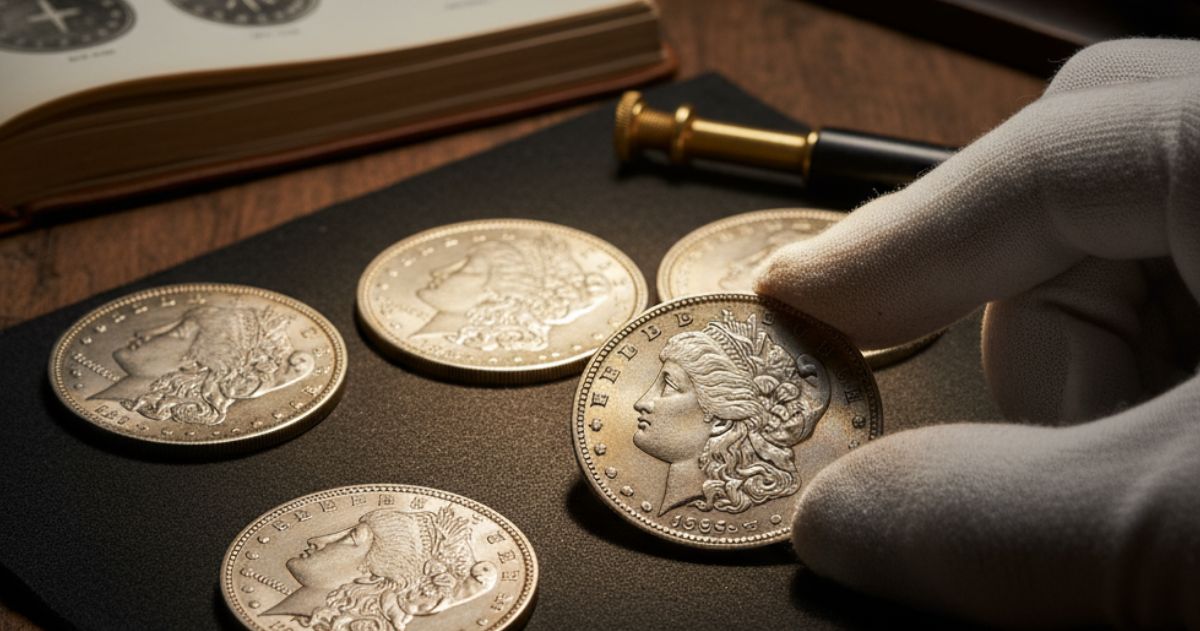8 Signs Your American Silver Dollar Coin Might Be Rare and Valuable
Finding an old American silver dollar coin in your drawer—or handed down from a grandparent—can feel like holding a piece of history. But how do you know if it’s truly valuable or just a keepsake? Certain signs can reveal whether your coin is worth much more than its face value. Learning what makes a silver coin rare can lead to exciting discoveries that transform an everyday find into a collector’s dream.
It’s not always about age. Some newer silver coins can also carry high value depending on their condition, mint mark, or unique errors. Even slight design variations can indicate that your coin belongs to a rare group. And with rising interest in precious metals, silver coins and silver bars are gaining attention—not only for their beauty but also for their investment potential.
As Pablo Picasso once said, “The meaning of life is to find your gift. The purpose of life is to give it away.” If your silver dollar coin turns out to be rare, it might be the gift that keeps on giving.
1. Unusual Mint Marks Add Real Value
One of the first things to check on your silver dollar is the mint mark. This small letter shows where the coin was made. Common ones include “D” for Denver, “S” for San Francisco, and “P” for Philadelphia. But some mint marks are much harder to find. Coins minted at places like Carson City (marked with “CC”) are often extremely valuable because fewer were produced.
Even coins struck without a mint mark—by accident—can be rare. These “no mint mark” coins, especially from certain years, are highly sought after. If you’re wondering about your American silver dollar coin value, start with that tiny letter on the reverse side—it could unlock a much bigger story.
2. Old Dates Can Mean Higher Worth
The date stamped on your coin plays a huge role in its value. Silver dollar coins from the 1800s or early 1900s often carry more worth, particularly if they’re part of a limited run or remain in good condition.
For example, the 1893-S Morgan silver dollar is one of the most valuable coins in U.S. history. By contrast, the 1921 Morgan dollar is more common and may not be worth as much unless it’s in mint condition. Proof coins—made in smaller quantities for collectors—also command higher values.
When evaluating American silver dollar coin value, remember: the right date can turn a common coin into a prize.
3. Rare Errors Boost Collector Demand
Coin collectors love mistakes. Errors such as double strikes, off-center designs, or missing features often make coins far more valuable than flawless examples.
A missing letter in “Liberty” or a slightly doubled image can make your coin a rare treasure. Some silver error coins sell for hundreds—or even thousands—because collectors crave unique imperfections.
Before dismissing your coin as ordinary, use a magnifying glass to check for odd details. That small quirk could make your silver dollar coin a standout.
4. Strong Condition Raises Coin Worth
Condition is everything in the world of coins. Grading runs from Poor to Mint State (MS), with MS coins being virtually flawless. A coin that looks crisp and shiny—even if it’s over 100 years old—can be worth far more than one with scratches or heavy wear.
Collectors pay a premium for coins with sharp detail, eye appeal, and minimal damage. But here’s a warning: don’t clean your silver coins. Cleaning can scratch the surface and actually reduce value. A professional appraisal is always the best move.
5. Low Mintage Years Are Collector Favorites
The number of coins produced in a given year—known as the mintage—can also determine rarity. The fewer coins made, the more valuable survivors become.
For instance, the 1895 Morgan Dollar from the Philadelphia Mint had an exceptionally low production. Even heavily circulated versions are in high demand today.
To check mintage, use online databases or consult a trusted coin dealer. When it comes to silver coins, scarcity often drives value.
6. Historical Relevance Adds Collector Interest
Silver coins are more than precious metals—they’re snapshots of American history. Coins minted during major events like wars, economic crashes, or significant policy shifts often carry added interest.
For example, silver dollars minted during the Great Depression or World War I are popular with collectors who value both their silver content and historical significance. Owning one can feel like holding a tangible piece of U.S. heritage.
7. Original Packaging or Certificates Help
Collectors prize coins that come with original packaging, protective holders, or certificates of authenticity. These extras help verify legitimacy and preserve condition.
If you’ve inherited a silver dollar coin still in its mint-issued box or accompanied by paperwork, keep everything together. That packaging can significantly boost resale value.
8. High Demand from Local Collectors
Sometimes value depends on the market. A coin that’s common nationwide may be rare in your area, driving up local demand. Coin shows, auctions, and local dealers are great places to gauge what buyers want.
Collector buzz spreads quickly. If your silver dollar attracts attention, competition among buyers can lift its value even higher.
Conclusion
Not every silver coin is rare, but when signs like unusual mint marks, low mintages, strong condition, or historical ties come together, your American silver dollar coin could be worth much more than you expect. Whether you’ve found one in a drawer or inherited a collection, these eight clues can help you spot a hidden treasure.
If you’d like expert guidance on evaluating your coins—or you’re interested in adding silver coins or silver bars to your portfolio—First Gold Group offers trusted advice, secure evaluations, and competitive pricing. Visit their site today to learn the true value of your silver and explore the best options for building your precious metals collection.
